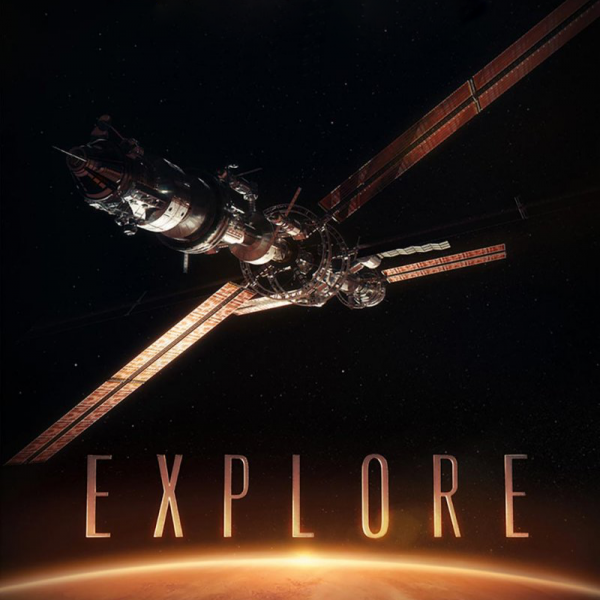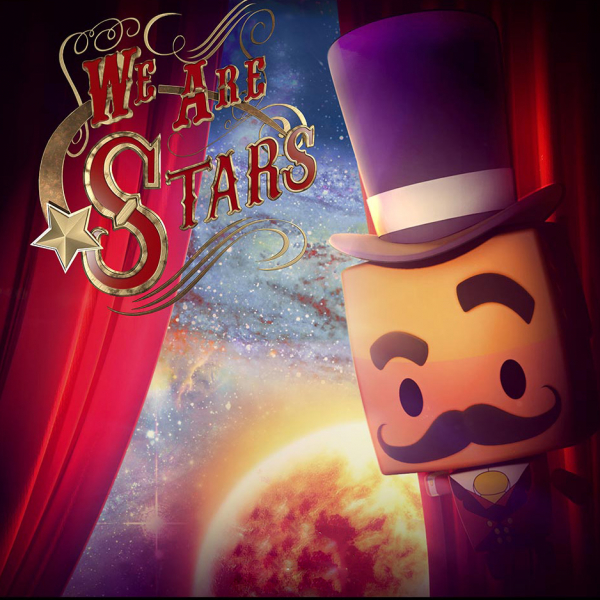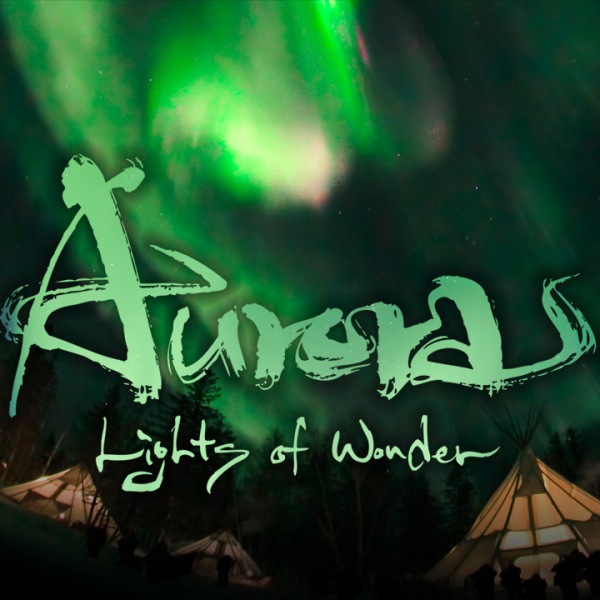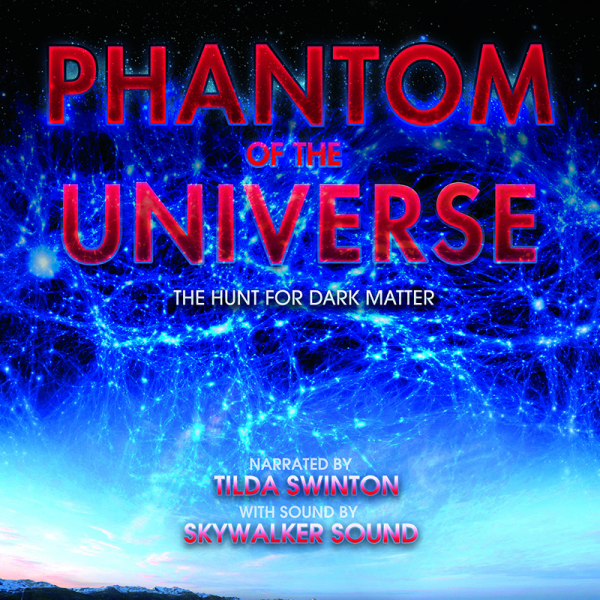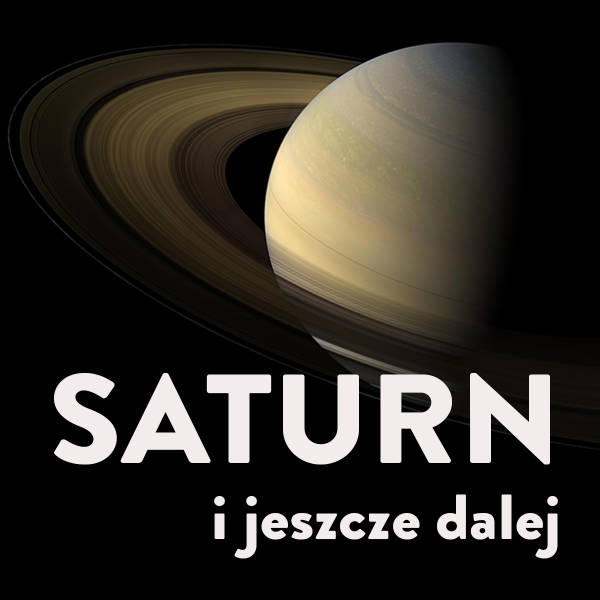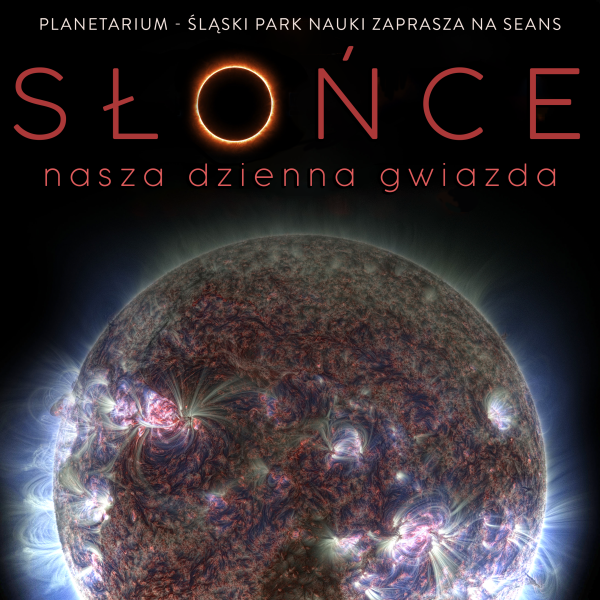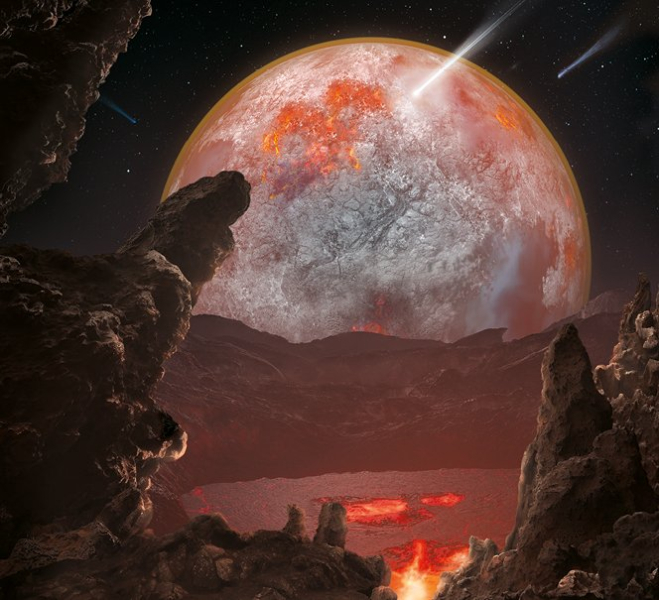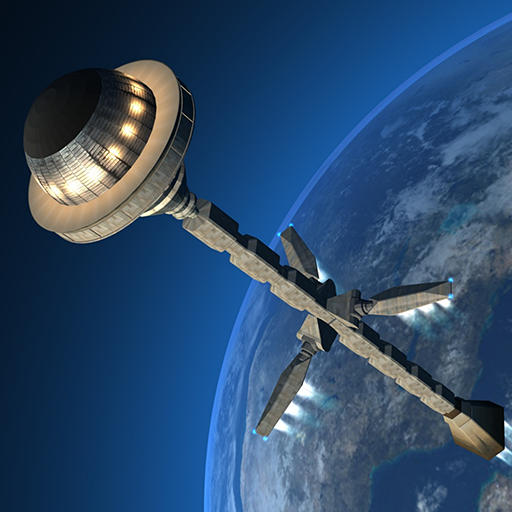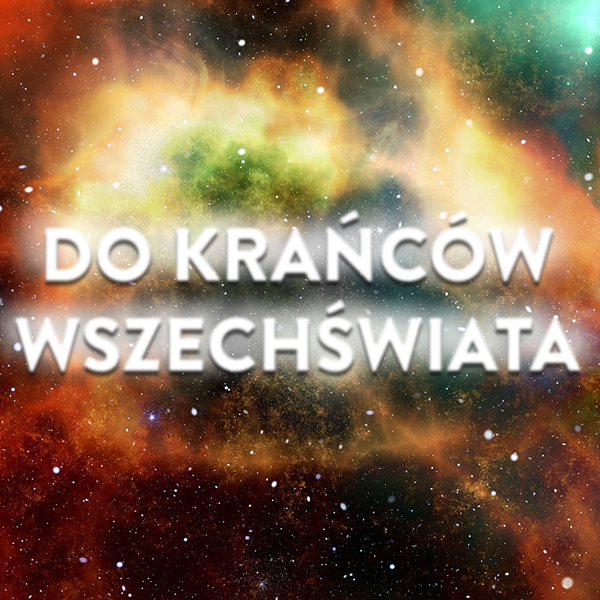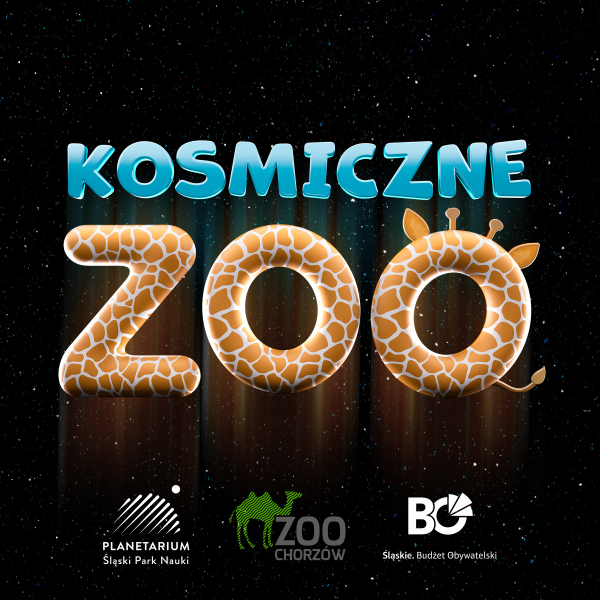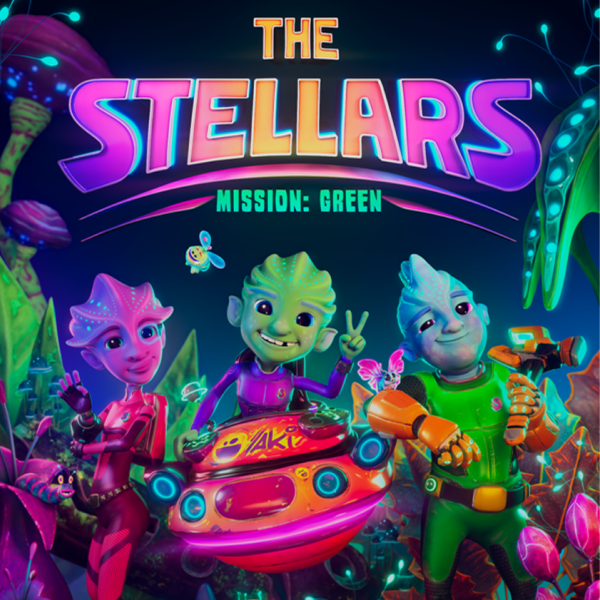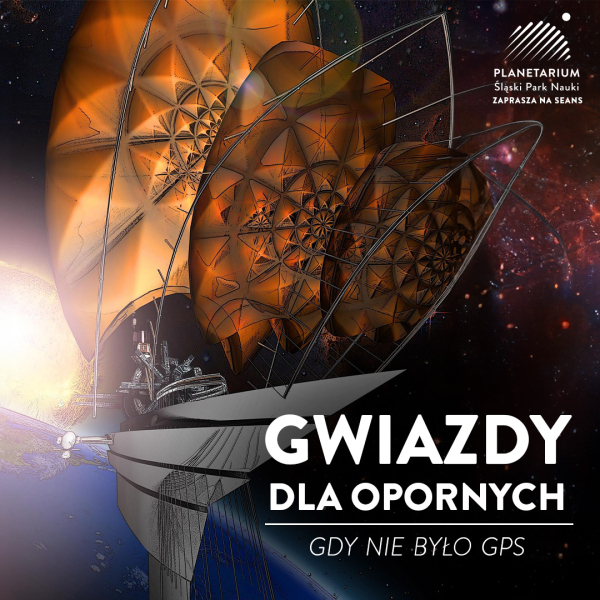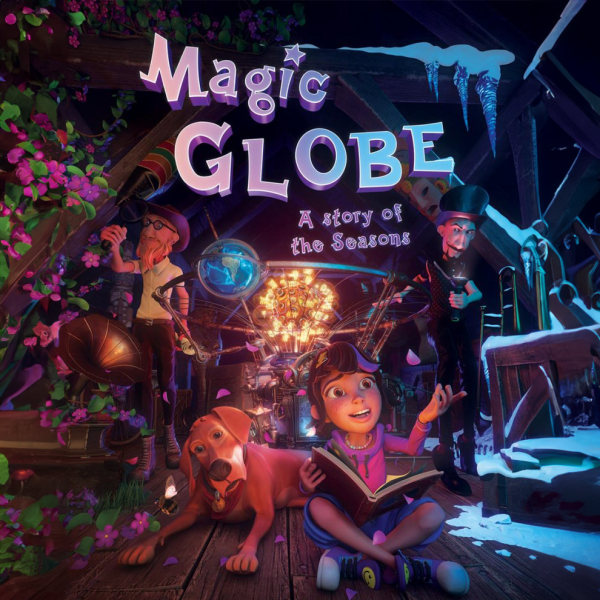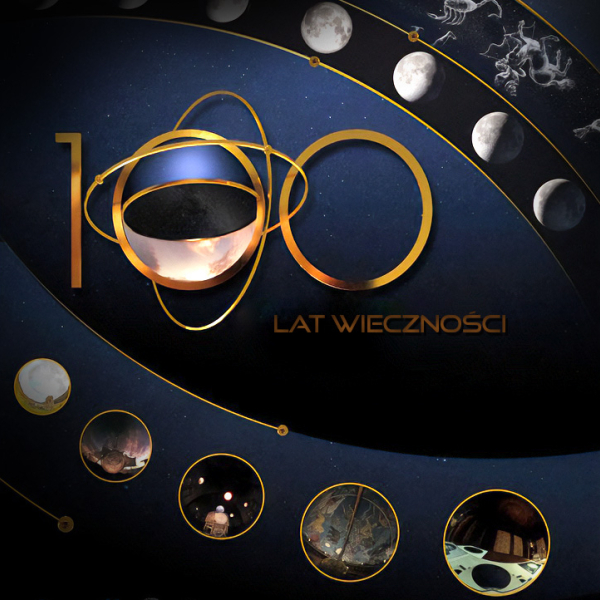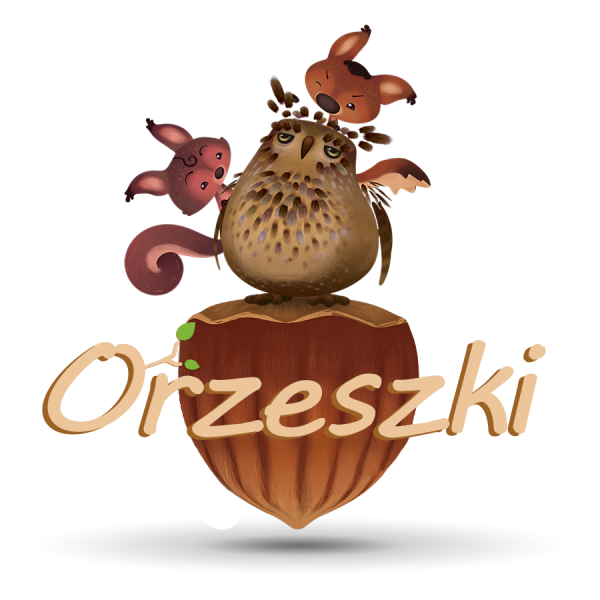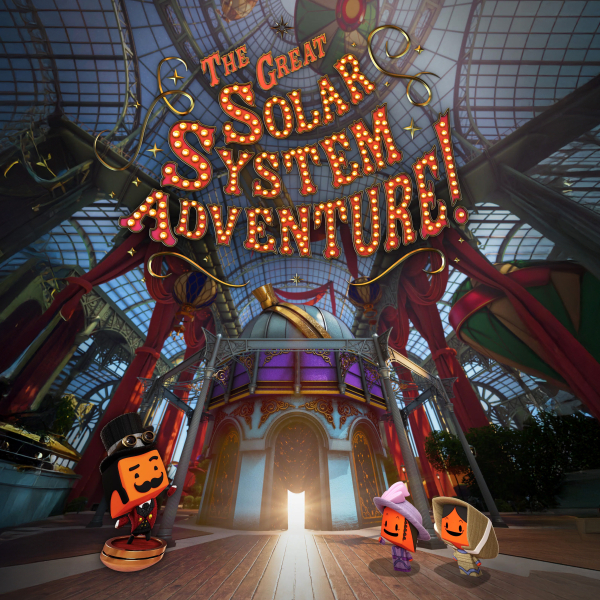Screenings
|
|
|
ExploreSince ancient times, humans have been fascinated by the sky. Stars have inspired researchers such as Nicolaus Copernicus and Johannes Kepler. Kepler's laws, centuries after the death of their author, allowed for the exploration of the cosmos and the landing of humans on the Moon. Thanks to them, it was possible to build the International Space Station and send space probes beyond the boundaries of the Solar System. The show demonstrates how these laws work, using simple, easy-to-understand animations and clear explanations. The screening consists of two parts - the first is a live tour of the current sky conducted by a lecturer in Polish. The second part is a projection in Polish. The English audio track is available by selecting the headphone icon in the booking system. Duration: 40 minutes Recommended audience age: 10+ Languages: Polish, English Production: Creative Planet Year of production: 2017 |
|
|
|
We are StarsAlthough we rarely realize it in our daily lives, we are composed of the same elements as the stars, nebulae, and distant galaxies. What was there at the beginning? How did life originate? What is the process of stellar evolution? These and many other questions are answered by the authors of the show, which has become a hit in planetariums worldwide. The screening consists of two parts - the first is a live tour of the current sky conducted by a lecturer in Polish. The second part is a projection in Polish. English and Ukrainian audio tracks are available by selecting the headphone icon in the booking system. Duration: 45 minutes Recommended audience age: 6+ Language: Polish, English, Ukrainian Production: NSC Creative Year of production: 2015 |
|
|
|
Aurora: Lights of WonderAlthough auroras are a common physical phenomenon, their sight seems to be one of the greatest wonders we can observe in nature. This show is a journey all the way to the polar circle, where auroras are a frequent occurrence. How are they formed, and how does the cosmos influence the Earth's atmosphere? The answers to these questions can be found in this session. The screening consists of two parts - the first is a live tour of the current sky conducted by a lecturer in Polish. The second part is a projection in Polish. The English audio track is available by selecting the headphone icon in the booking system. Duration: 45 minutes Recommended audience age: 10+ Languages: Polish, English Production: Hugmedia, Kwon O Chul Year of production: 2016 |
|
|
|
Phantom of the Universe - The Hunt for Dark MatterThe Hunt for Dark Matter is a screening that presents an exciting exploration of Dark Matter, from the Big Bang to the long-awaited discovery at the Large Hadron Collider. The screening reveals the observations of the first traces of Dark Matter through the eyes of the scientist who coined the term - Fritz Zwicky. We will witness the stellar choreography observed by Vera Rubin in the Andromeda galaxy, and then we will dive deep underground to see the most sensitive dark matter detector on Earth, located in a former gold mine. From there, we will travel through space and time to the Large Hadron Collider at CERN, racing past particles before they collide in visually stunning explosions of light and sound. At the same time, we will learn how scientists from around the world collaborate to track down the components of dark matter. The screening consists of two parts - the first is a live tour of the current sky conducted by a lecturer in Polish. The second part is a projection in Polish. The English audio track is available by selecting the headphone icon in the booking system. Duration: 45 minutes Recommended audience age: 14+ Languages: Polish, English Production: ESO Year of production: 2017 |
|
|
|
Saturn & BeyondThe rings of Saturn are one of the most beautiful objects in the Solar System. Although astronomers discovered them over 400 years ago, to this day their enigmatic nature remains a great inspiration for space exploration. We invite you to the screening "Saturn and Beyond," where you will learn about the history of the discovery of Saturn's rings and see them up close thanks to space probes that have studied the planet. The screening consists of two parts - the first is a live tour of the current sky conducted by a lecturer in Polish. The second part is a projection in Polish. The English audio track is available by selecting the headphone icon in the booking system. Duration: 45 minutes Recommended audience age: 14+ Languages: Polish, English Production: RSA Cosmos/Bell State University Year of production: 2017 |
|
|
|
The Sun, Our Living StarThe Sun is a star that is only about 8 light minutes away from us. It witnesses everything that happens on our planet. We owe it our lives and almost all the energy our civilization possesses. The Sun also drives the wind and shapes the weather. In this screening, we can get closer to the Sun and get to know it better - to understand how much we depend on the thermonuclear processes that occur inside our star. We learn what sunspots are and how much our star will change in four and a half billion years when it reaches the end of its life. The screening consists of two parts - the first is a live tour of the current sky conducted by a lecturer in Polish. The second part is a projection in Polish. English and German audio tracks are available by selecting the headphone icon in the booking system. Duration: 45 minutes Recommended audience age: 12+ Languages: Polish, English, German Production: European Southern Observatory - ESO Supernova Planetarium Year of production: 2018 |
|
|
|
Birth of Planet Earth“Birth of Planet Earth” is a planetarium fulldome show that tells the twisted tale of our planet’s origins. Scientists now believe that our galaxy is filled with solar systems, including up to a billion planets roughly the size of our own. The film employs advanced, data-driven, cinematic-quality visualizations to explore some of the greatest questions in science today: How did Earth become a living planet in the wake of our solar system’s violent birth? What does its history tell us about our chances of finding other worlds that are truly Earth-like? The screening consists of two parts - the first is a live tour of the current sky conducted by a lecturer in Polish. The second part is a projection in Polish. English audio track is available by selecting the headphone icon in the booking system. Duration: 40 minutes Recommended audience age: 14+ Languages: Polish, English Production: Spitz Creative Media Year of production: 2019 |
|
|
|
Comet over SilesiaOne of the most popular shows produced by the Silesian Planetarium returns in a brand-new edition. Berenika and Jurek get lost in the Silesian Park. As they wander among the trees, they stumble upon the Silesian Planetarium, whose building transforms into a gigantic spaceship. During their journey toward the titular comet, the children are accompanied by Nicholas, who tells the passengers of the Planetarium about constellations, planets, and other celestial bodies. The screening consists of two parts – the first is a live, Polish-language guide to the current night sky. The second part is a full-dome film presented in Polish. An English audio track is available by selecting the headphone icon when booking your ticket. Duration: 45 minutes Recommended audience age: 5+ Languages: Polish, English Production: Planetarium – Silesian Science Park Year of production: 2011/2023 |
|
|
|
To the Edge of the UniverseJoin us on an extraordinary journey to the farthest corners of the Universe. Thanks to advancing technology, new generations of astronomers are able to peer deeper into cosmic space than ever before. But how can we estimate distances in the Universe? How do we calculate the rate at which it is expanding? And how far can our gaze truly reach? These questions are explored in this show, which combines the capabilities of a traditional star projector with a state-of-the-art digital system that displays any moving images in ultra-high resolution on a spherical screen. An English audio track is available by selecting the headphone icon when booking your ticket. Duration: 45 minutes Recommended audience age: 14+ Languages: Polish, English Production: Planetarium – Silesian Science Park Year of production: 2024 |
|
|
|
Cosmis ZOOTogether with the Silesian Zoological Garden, we invite you to a special children’s show titled Cosmic Zoo. This skyward journey unveils the astronomical secrets of animal constellations and the zodiac. Thanks to the clever young giraffe Lilo, you'll also hear about the adventures of the Silesian Zoo’s residents. From the early morning, young Lilo is in quite a mood... Why? Because she claims she has no friends. With the help of Planetarek, she discovers that companions can be found not only on Earth but also in the stars — and what extraordinary company it is! Cosmic Zoo is a unique blend of astronomy, stunning visuals, and — above all — great fun for the whole family! The screening consists of two parts – the first is a live Polish-language guide to the current night sky. The second part is a full-dome film presented in Polish. An English audio track is available by selecting the headphone icon when booking your ticket. Duration: 40 minutes Recommended audience age: 4+ Languages: Polish, English Production: Planetarium – Silesian Science Park Year of production: 2024 |
|
|
|
The StellarsWe warmly invite you to a brand-new show created by Creative Planet – a Polish film production company well known to our audiences for the popular show Explore. This time, the creators present a film designed especially for younger viewers – The Stellars. IMANI, AKI, and JOHN leave their comfort zone and set off on a crucial mission to protect their unique forest! The Stellars by Creative Planet is a high-quality CGI animated film created specifically for young children. It goes beyond entertainment by weaving key educational themes into a story driven by engaging characters. It’s a perfect blend of fun and learning, designed to spark imagination and curiosity. By breaking the fourth wall, the characters speak directly to the audience, drawing children into their world and ideas. The film’s educational content explores the basics of plant growth, the diversity of Earth’s environments, and the vital role of forests as habitats. It emphasizes our connection to nature and our responsibility to protect it, while also highlighting the value of scientific methods in understanding the world around us. Join The Stellars on their mission! The screening consists of two parts – the first is a live Polish-language guide to the current night sky. The second part is a full-dome film presented in Polish. An English audio track is available by selecting the headphone icon when booking your ticket. Duration: 45 minutes Recommended audience age: 6+ Languages: Polish, English Production: Creative Planet Year of production: 2024 |
|
|
|
Stars for dummies - Before GPSFor thousands of years, stars served as guides for travelers. But in the 21st century — the age of the Internet, GPS, and artificial intelligence — is the sky still as close to us as it once was? How will we find our way if one day the gadgets of our civilization stop working? This show tells the stories of famous explorers who navigated their journeys by the stars. It presents the night sky and its constellations as they appear during different seasons of the year — proving that, no matter the time, stars can always help guide us home. The screening takes full advantage of the Chiron GOTO III analog projector, which can display millions of stars on our spherical screen with stunning precision. Duration: 40 minutes Recommended audience age: 10+ Languages: Polish, English Production: Planetarium – Silesian Science Park Year of production: 2024 |
|
|
|
Magic Globe - A Story of the SeasonsMagic Globe is a beautifully crafted and engaging film. While watching, we dive into a captivating story that helps us better understand how the seasons work, based on the astronomical characteristics of our planet. Mia is a curious young girl spending her summer holidays at her grandfather’s house. While exploring the attic, she accidentally discovers a mysterious astronomical machine. However, her uncle Edek uses the magical powers of the device to trick her into changing the seasons on Earth. Mia soon realizes that her actions could have serious consequences for the planet. Will she manage to set things right? The screening consists of two parts – the first is a live, Polish-language guide to the current night sky. The second part is a full-dome film presented in Polish. English audio track is available by selecting the headphone icon when booking your ticket.
Duration: 45 minutes Recommended audience age: 5+ Languages: Polish, English Production: Creative Planet Year of production: 2020 |
|
|
|
100 Years of EternitySince the dawn of time, humans have gazed at the stars. This fascination is evident in megalithic stone circles, the achievements of ancient astronomy, and the development of maritime navigation. The crowning achievement of our passion for the sky is the creation of the planetarium — a device capable of reproducing and displaying the positions and motions of celestial bodies at any time and place. Almost 101 years after the world’s first modern planetarium was built, we invite you on an extraordinary journey through humanity’s enduring fascination with the starry sky and the mysteries of the Universe. The show consists of two parts – the first is a live, Polish-language guide to the current night sky. The second part is a full-dome film presented in Polish. English and Ukrainian audio tracks are available by selecting the headphone icon when booking your ticket. Duration: 45 minutes Recommended audience age: 14+ Languages: Polish, English, Ukrainian Production: Tobias Wiethoff / Planetarium Bochum Year of production: 2022 |
|
|
|
Hazelnuts, In Search of Perfect PlanetOnce upon a time, there were two squirrels, Nino and Lilli, who would do anything for hazelnuts — and even more for super hazelnuts. Rumor had it that those special nuts could be found high up in the sky, on planets. So why just dream about them, when you could go and find them? The Silesian Planetarium warmly invites you to its newest show for the youngest audiences. Hazelnuts, In Search of the Perfect Planet follows two bold squirrels on their quest to find super hazelnuts among the celestial bodies of our Solar System. A story of hazelnuts and planets Hazelnuts grow on trees, and planets orbit the Sun — they seem to have nothing in common, yet they appear in the same adventure. Hazelnuts is a story full of fun, hide-and-seek, and mischievous squirrels. A tale that entertains while gently introducing children to ecological awareness. The screening consists of two parts – the first is a live, Polish-language guide to the current night sky. The second part is a full-dome film presented in Polish. An English audio track is available by selecting the headphone icon when booking your ticket. Duration: 45 minutes Recommended audience age: 4+ Languages: Polish, English Production: RSA Cosmos / 3D Emotion / Mediastro Promotion Year of production: 2023 |
|
|
|
The Great Solar Syste, Adventures!Join the legendary Schiaparelli on an extraordinary show that takes the audience on a breathtaking, danger-filled journey through time and space! From the scorched surface of Mercury to the icy wilderness of Pluto — and beyond — prepare to face the many hazards and wonders of our Solar System during a spectacular voyage that reminds us just how precious our own planet truly is. But be warned: this adventure takes you right into the heart of some of the most perilous places in our cosmic neighborhood. It will take some serious piloting skills to make sure everyone returns in one piece! The screening consists of two parts – the first is a live, Polish-language guide to the current night sky. The second part is a full-dome film presented in Polish. An English audio track is available by selecting the headphone icon when booking your ticket. Duration: 45 minutes Recommended audience age: 6+ Languages: Polish, English Production: NSC Creative Year of production: 2024 |
